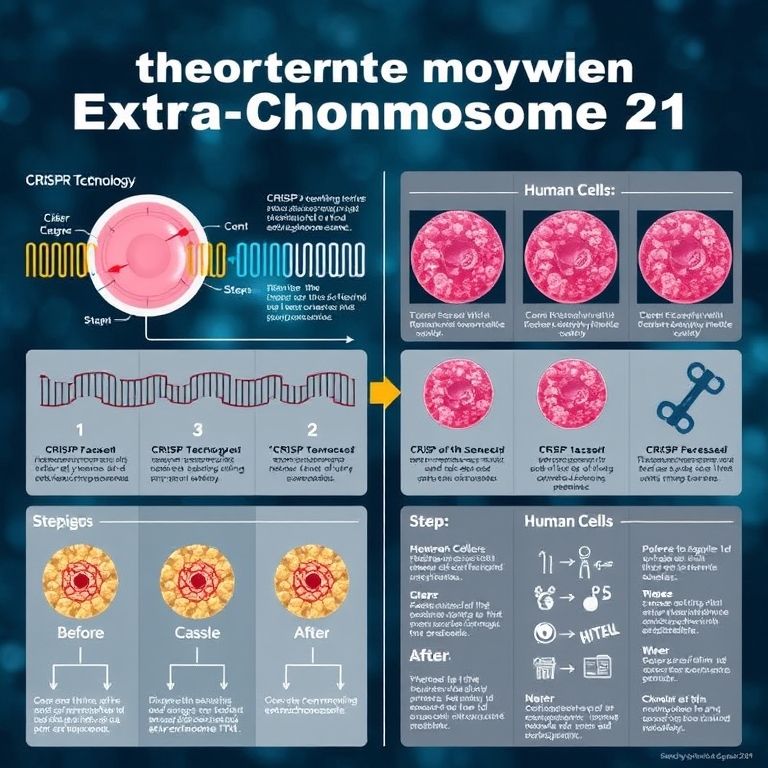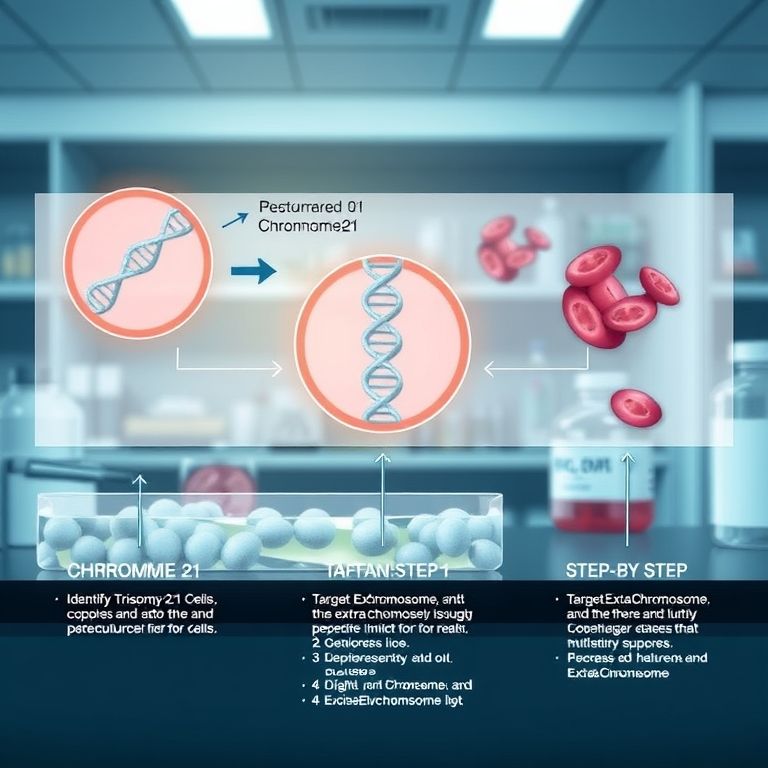Breakthrough Genetics: Stunning CRISPR Success Removes Extra Chromosome 21
Breakthrough in Genetics: Japanese Scientists Remove Extra Chromosome 21 Using CRISPR
The recent breakthrough in genetics made by Japanese researchers marks a significant milestone in the fight against Down syndrome. For the first time, scientists successfully eliminated the extra chromosome 21—the fundamental genetic cause of Down syndrome—from cultured human cells. This pioneering achievement was accomplished in vitro through the revolutionary CRISPR gene-editing technology and opens the door to new possibilities for understanding and potentially treating this condition in the future.

Understanding the Significance of Elimination of Extra Chromosome 21
Down syndrome is caused by an extra copy of chromosome 21, a condition known as trisomy 21. This additional chromosome disrupts normal development, leading to the characteristic features and intellectual disabilities associated with the syndrome. Current treatments primarily focus on managing symptoms and improving quality of life but do not address the underlying genetic cause.
The breakthrough involves selectively removing this third copy from cultured human cells. Japanese scientists at Mie University utilized CRISPR, a gene-editing tool that acts like molecular scissors, to precisely target and excise the extra chromosome 21 in a subset of trisomy-21 cells grown in vitro. While this process is still experimental and confined to laboratory settings, it represents a crucial first step toward developing therapies that may one day correct the genetic anomaly itself.

CRISPR Technology: A Revolution in Genetic Engineering
CRISPR (Clustered Regularly Interspaced Short Palindromic Repeats) technology has revolutionized genetics by enabling unprecedented precision in editing DNA. Unlike previous gene-editing tools, CRISPR can be programmed to target specific genetic sequences efficiently and with fewer off-target effects. This makes it especially promising for correcting genetic disorders like Down syndrome.
In this study, researchers harnessed CRISPR to selectively remove the entire extra chromosome 21 rather than just mutating specific genes. This approach is particularly innovative because it suggests the possibility of addressing chromosomal abnormalities at a structural level, rather than solely focusing on smaller-scale genetic mutations.
Potential Implications for Future Therapies
While the elimination of the extra chromosome in cultured cells marks an important scientific achievement, several challenges remain before this method could become a viable therapy for humans. First, researchers must determine if similar techniques can be safely and effectively applied within living organisms. Secondly, the complexity of human development means that simply removing the extra chromosome may not reverse all developmental effects already in progress.

Moreover, delivering CRISPR machinery into human tissues safely and ensuring precise control over the editing process remain significant hurdles. As exciting as this discovery is, it is important to acknowledge that it is a preliminary step and not a cure.
Ethical Considerations Surrounding Genetic Engineering
Alongside the scientific excitement comes an equally urgent conversation about the ethical implications of this work. The ability to edit human chromosomes raises questions about where we should draw the line in genetic engineering. Should there be strict limits on how far science can go in altering the human genome?
Some experts warn against unintended consequences if genetic manipulation is carried out without thorough oversight. There are concerns about potential misuse, such as attempts to create so-called “designer babies” or reduce human genetic diversity by eliminating traits considered undesirable.
Human diversity, including conditions like Down syndrome, plays a vital role in the richness of the human experience. The possibility of “correcting” such traits challenges society to rethink concepts of normalcy, acceptance, and inclusion. Broad public dialogue involving scientists, ethicists, policymakers, and affected communities is essential to navigate these complex issues responsibly.
The Path Forward: Caution and Collaboration
Scientists emphasize the need for caution, rigorous regulatory frameworks, and extensive testing before any clinical applications can be considered. The research conducted at Mie University is a powerful example of the potential of genetic technologies, but it also serves as a reminder of the responsibilities that accompany such advances.
Moving forward, multidisciplinary collaboration will be critical to ensure that breakthroughs in genetics are used ethically and equitably. Transparent communication with the public and inclusion of diverse perspectives can help balance innovation with humanity’s broader social values.
Conclusion
The elimination of the extra chromosome 21 from human cells by Japanese scientists using CRISPR technology represents a major breakthrough in genetics and Down syndrome research. While clinical application remains distant, the work opens up new avenues for understanding and potentially treating this genetic condition. At the same time, this progress raises profound ethical questions that demand careful consideration through public discourse, regulation, and scientific responsibility. This landmark achievement is a shining example of how cutting-edge science can both inspire hope and challenge society to think deeply about the future of human genetics.
Source: Mie University press release
